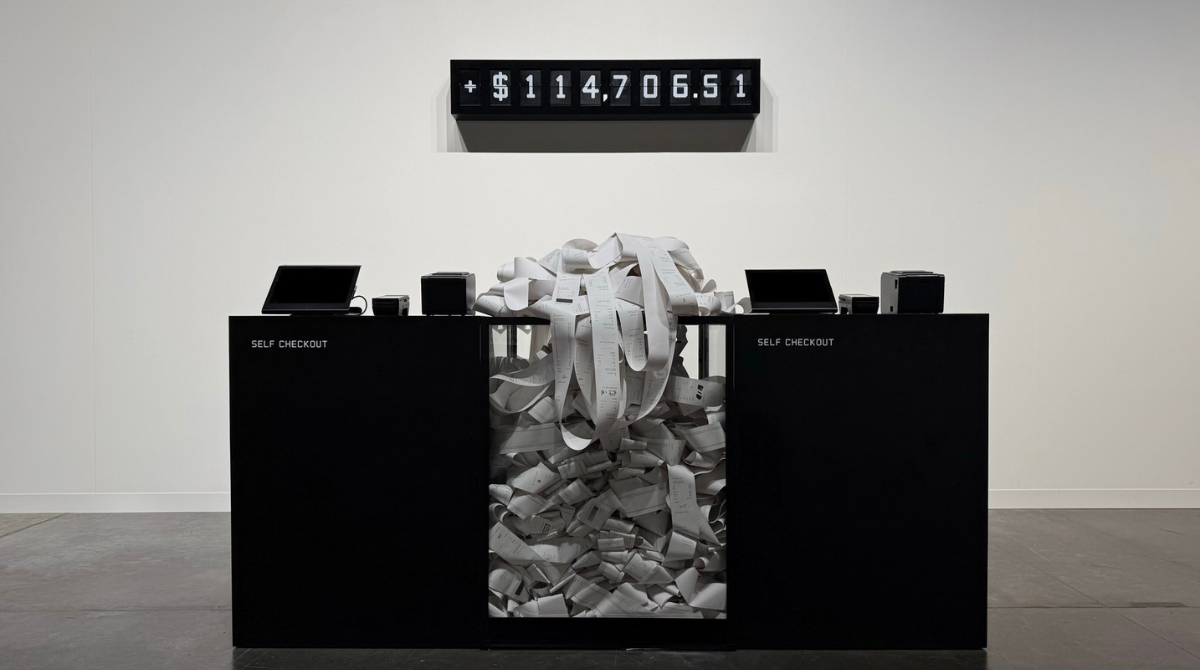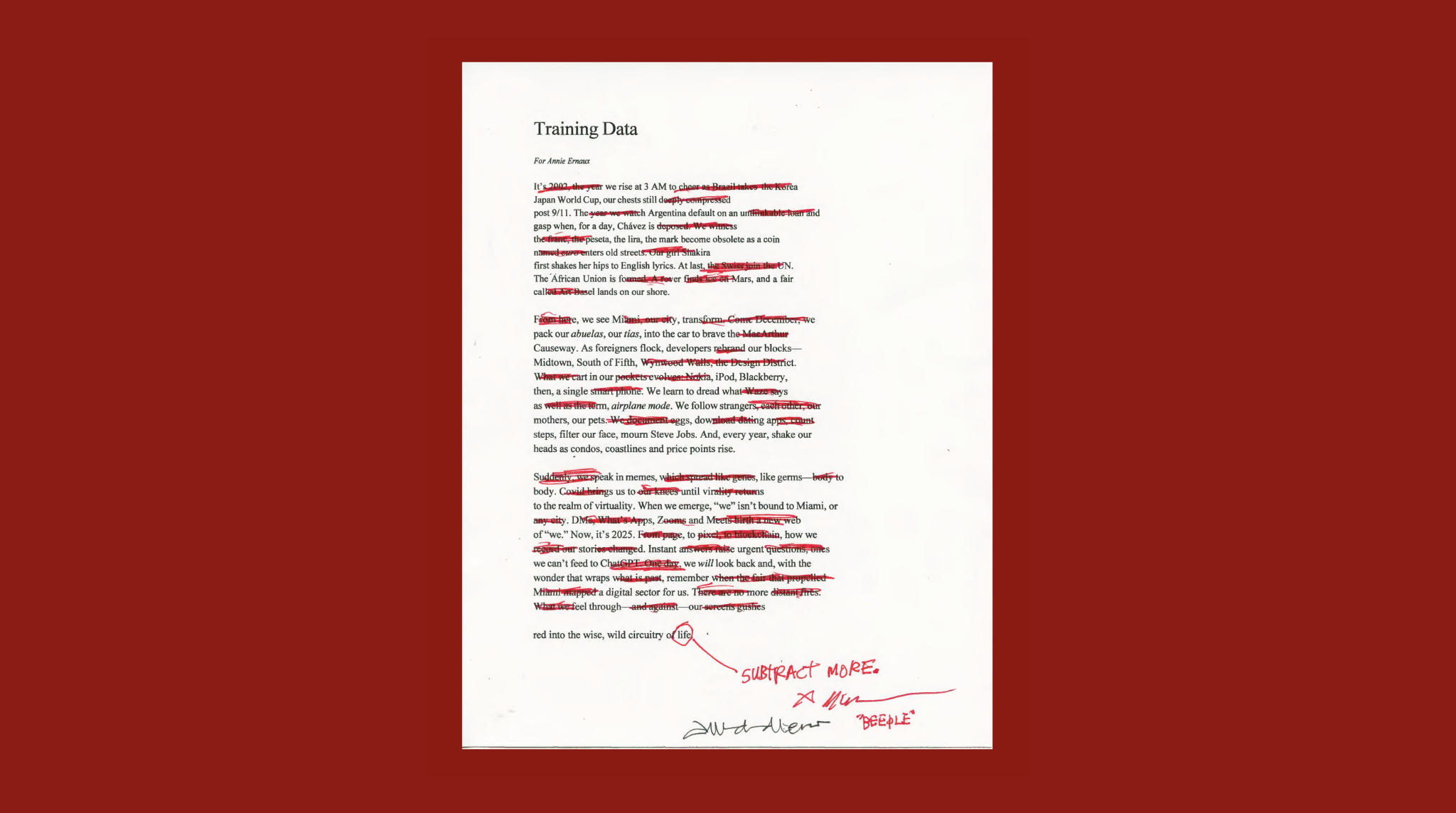After sitting down with jvmi last year to chat about his top-selling collection, ”swatches," we had the opportunity to reconnect in time for his latest release, "charts." The presale for "charts" starts at 9:00am PDT on March 20th and the collection drops at 12:00pm PDT on March 20th.
Note: This transcript has been edited for length and clarity.

OpenSea: Tell us about the inspiration behind “charts” and the evolution from “swatches” to “charts.”
jvmi: After “swatches,” I really found my style as a digital artist. Prior to that, I was trying a bunch of different styles that were appealing to me that came from my previous work as a streetwear artist. Since “swatches,” I've developed this code, and now all of my artwork is fully generative. I wanted to take the “swatch” aesthetic and build on it. I think “swatches” made it very obvious what the “charts” aesthetic would look like.
The inspiration behind it was this feeling that I had as an artist. It seemed that no matter what artwork got put out, what people really cared about was just about price. The image almost didn’t really matter when it came to NFT traders. That was something that I didn't realize would be such a big element coming in as an artist. Price is something that people are very fixated on in this space, and I didn't like that as an artist. So, this project is basically a refutation of that idea because, for me personally, when I wake up every morning, I'm checking my portfolio. I'm looking at what's the market doing today, thinking, “How's everything looking?” and I wanted to take that experience and recreate it as a kind of parody of that experience by turning it into an art form.
When you're checking your charts — when it comes to actual money — the only thing you really care about is that the numbers are going up. But [for this project], I wanted to remove the concept of price from a chart in the first place and just use that canvas as a piece of abstract art. [Within the world of “charts,”] it’s not the most valuable ones that you would traditionally like if they were in your portfolio. The most valuable ones are the ones that form cool or rare patterns. For example, if my portfolio went down only, that would be very bad, but in this project, after someone mints and as the reveal starts to happen, if you see your number going down only, that's going to be a very, very rare chart because the probability of that happening is very low. It flips the whole equation of how people are reading charts. You're analyzing these charts in a way that is different from how we previously looked at them. My goal with the collection was to create that experience.
OpenSea: Yeah, that's really interesting. You touch on this obviously in what you just said, but there's a delicate balance of commerce and art in the NFT space, and this feels like a commentary on that balance. How did you take ownership of that concept and create art around it?
jvmi: That's exactly what I was trying to do with this. If people are going to care about price, I decided to just remove everything else from the equation except price. It's literally just a chart that you're looking at. That did something for me. I'm curious to see what the reaction is and how people analyze it. It's more of a question I'm throwing out there to see how people interact with it. Obviously, there is an aspect to creating in this space where price is important, and it does matter. I'm not saying that it shouldn't matter at all. Just the ratio of how people see it is interesting to me. Coming into the space early on, this was always something I had in my head. It’s an artistic experience more than a collection.
OpenSea: You’ve created interactive pieces now multiple times. Why is creating that type of art important to you?
jvmi: I've been an artist my whole life, and I've worked in digital mediums for the past 10 years, but “swatches” was the first project that I felt could not be created in any other context. How are you gonna sell that if you don't have it as an NFT? The only way to actually own a piece of code like that is through an NFT. I'm very committed to developing as an artist in this way now, especially if I end up creating a new space where I'm innovating on puzzles and technology that exists rather than bringing in things that have existed beforehand and just putting them on chain.
“charts” is the first project that I've made where I've actually written a lot of the smart contract code. I'm not a Solidity developer, but that was something that I really wanted to get in tune with because it unlocks more creative freedom with what you can do. The reveal mechanism with “charts” a day reveal, which is meant to mirror me looking at my phone and checking my portfolio every day. I also wanted to be able to combine them and create rarity. I had to dig into the code to actually accomplish that. And I think that also explains why I wanted to create digital artwork that lives onchain, because it has a purpose for being an NFT.
OpenSea: What do you hope in the end that people will take away from “charts” as a project?
jvmi: I hope people get the full experience, first of all. What I hope is that people actually check their charts every day and have that whole experience because alongside the mint I have in the Farcaster channel, I developed a frame that is basically just connected to my website where you'll get a push notification every day that the charts have updated. It’ll be a collective experience for everybody who is watching their charts individually update.
I hope that people get the experience of hoping that their chart doesn't just go up and that they're actually thinking about what the pattern means and what that would mean for the value of their NFT and not just the price that is built into the chart. There's a burn feature after the reveal happens. There's no rarity in the beginning, but later, you can burn them together and create a new chart and that new one is more rare than the two that you started with. I hope that people are doing that after. It's a cool thing that the community can take part in, and it will keep the project relevant for a little bit longer. I hope that people see the continuity between “swatches” and “charts.” The art style that I began to develop from “swatches” is obviously being seen in charts. I am trying to develop this larger body of work that all relates to itself. I have a few ideas.
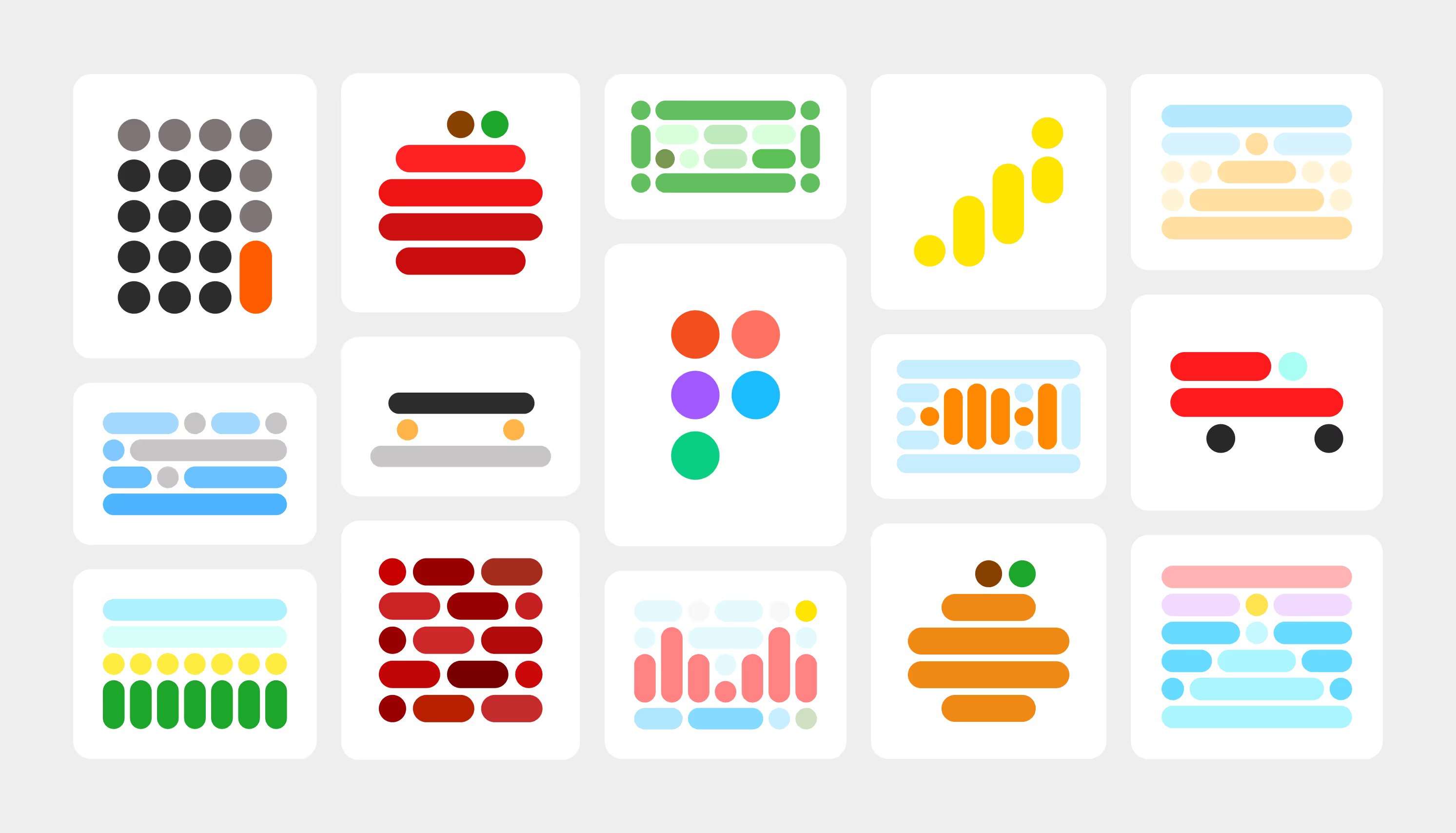
OpenSea: You mentioned that at the end of “swatches” you already had this idea for “charts.” Do you have any sense of what’s next yet?
jvmi: I think “swatches” dropped in mid-April of last year, and I made the first rendition of the first chart that same month, literally just two weeks after. I went immediately back into working, but it was a journey to sculpt what the project would look like. As for what’s next, I have a few ideas. Nothing super concrete, so I won't say specifically what they are. But one thing that I really thought was interesting about “swatches” is that I built in the dark. I just built it and released it. Now that there is a collector base of people who hold “swatches,” it's been very helpful for me to dogfood things to them and then get feedback. So, I didn't release the charts idea, but I was releasing visuals, and people seemed to like the aesthetic, which helped me say, "Okay, this is something that I feel like the current audience will like."
I put something out asking, “What if you could do the same mechanic that you're doing with the charts where you burn them together for swatches?” And it was cool because the community actually didn't like that. It was great to have this feedback because previously I would have just built that and spent six months doing that, but now that I get instant feedback, it's very helpful. It’s more interactive with the community, which I really like.
OpenSea: What are other ways that you interact with your community, especially in between drops?
jvmi: The way to interact with the community that I have found works for me is just to be genuinely creating things and showing them and seeing what feedback there is because most people are not actually looking to be deeply integrated into some very overwhelming community [with a promised roadmap or future utility]. That's not how I collect projects, either. If I like it, I'll mint it and then very loosely monitor what's going on.
OpenSea: A lot of the technology that you're utilizing is stuff that's evolved in the last few years. Do you see any interesting emerging technology that you're keeping your eye on that you might want to integrate into your art in the future?
jvmi: Yeah, definitely. Building this project, I leaned heavily on a lot of AI stuff. I not saying that I'm going to make an AI art project, but potentially creating something that could leverage that in some way would be cool.
The biggest technology unlock that has helped me with my artwork, though, is a lot of the layer 2 stuff. This is built on Base, and the way that the contracts are written doesn't need to be as gas-efficient as if it were on Ethereum. All of the metadata for “charts” is fully stored onchain. So it would be very expensive to do that if I was on an L1. The fact that this is on an Ethereum layer 2 unlocks what this project could be because it also makes collecting this way less expensive. Along with this project, the contracts can just get more and more complex for what I create in the future, and there's no real cost to the user. So I'm excited to explore that further down the line.
OpenSea: That means that so much more is possible.
jvmi: Yeah, exactly.
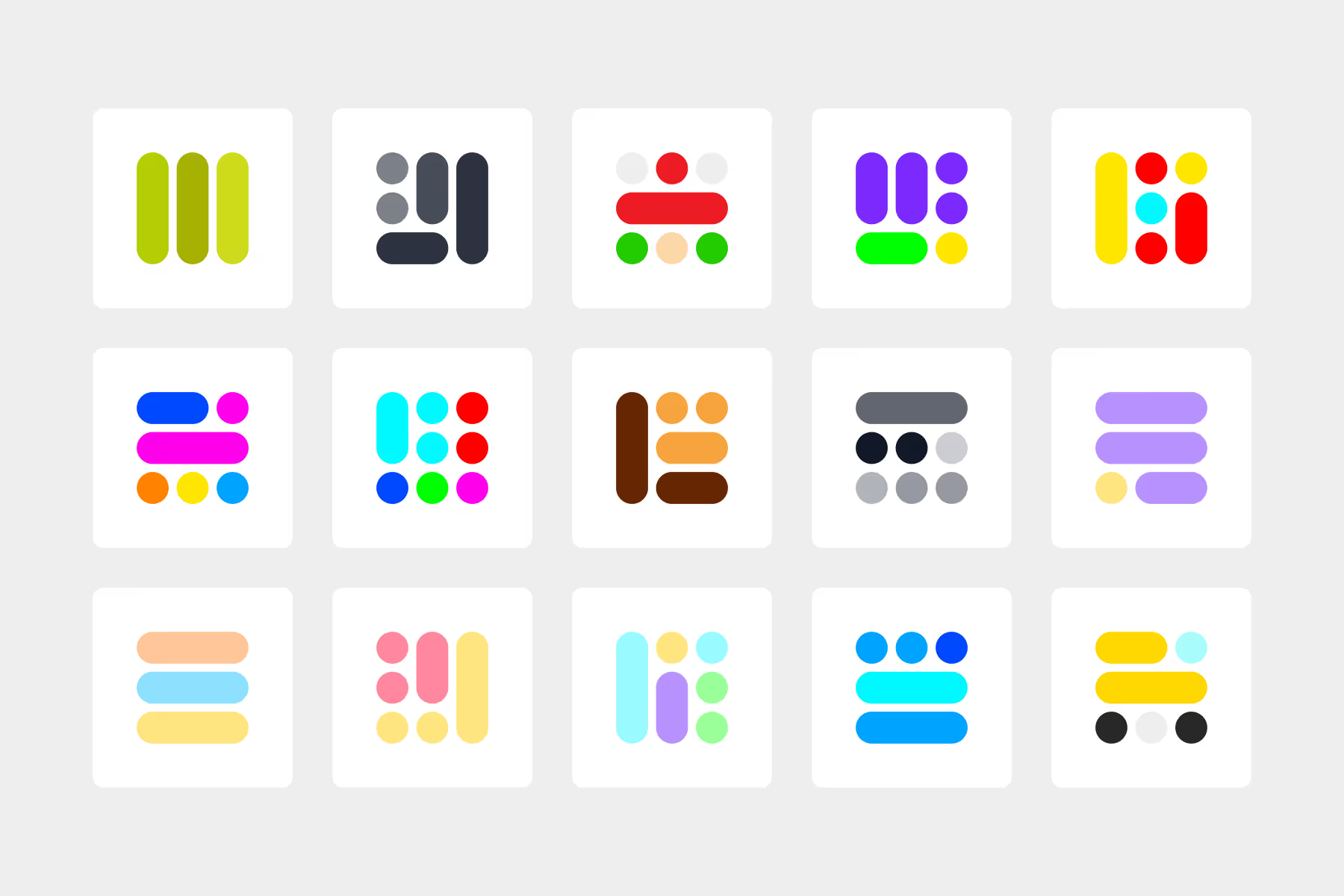
The interview below was conducted in May 2024.
Semi-pseudonymous artist jvmi’s ”swatches” series ranks as one of the top-selling collections on Base. As a front-end developer at Ethereum layer-two Optimism and a streetwear designer, he relies on his technical coding skills and graphic design expertise to create dynamic digital artworks. His ultimate vision? Crafting an art world in which viewers are encouraged to get closer with digital pieces.
“I often find myself getting too close to paintings at exhibits,” jvmi recently told OpenSea. “About a month ago at SFMoMA, I was so close that a security guard had to remind me to step back.”
That moment sparked an epiphany about NFTs for jvmi. He thought about their potential to encourage interactive digital art — something that hasn't quite existed before. For the first time, jvmi says digital art can be collected and experienced in a way that feels native to the forum on which they were created, i.e. the internet. He hopes to champion art that is primarily experienced on a screen and built for interactive engagement in public settings, not just passively observed.
“It makes sense to focus on the online sphere, where the primary medium for consuming art is a screen,” he said. “That’s art designed to be rendered by a computer, embracing its native digital form, rather than merely replicating a picture that could exist both physically and digitally.”
In this interview, we explore the San Francisco-based artist’s approach to design and blockchain, plus his thoughts on the future of digital art.
Note: This transcript has been edited for length and clarity.
OpenSea: Let's begin with your background and inspiration. Could you share the journey that led you to become an NFT artist and how your experiences have shaped your style in the NFT space?
jvmi: Sure, I entered the crypto space about three years ago. From a young age, I always knew I wanted to pursue art full-time, but it was challenging to see a clear path to support myself with it. During my college application process, I discussed this with my counselor, who, due to my own misunderstanding, recommended computer science. I thought it was the same as graphic design, which it is not. The mix-up actually introduced me to coding, though, which I grew to appreciate as another form of creativity.
After college, I became increasingly involved in digital art. It was about three or four years ago that I began to merge my art with programming. This combination of skills eventually led me into the NFT space. Inspired by several artists I admired just before the 2021 hype cycle, I decided to explore and create in this new space, which has been an incredible journey.
OpenSea: I love that story; it shows that even when someone’s path takes unexpected twists, they’re still on their unique journey. You can’t really mess it up and we’re meant to find what’s meant for us. Your accidental entry into computer science is a perfect example of that! What was one of the first things you coded, and when did you realize you could merge coding with graphic design as a form of creative expression?
jvmi: The integration of coding and art wasn't immediate for me. It was a gradual process. Initially, I saw coding and art as distinct from each other. About three years ago, I began to merge them. My introduction to digital art began in school, where I taught myself to use Adobe Illustrator and similar programs. Later, while working at a development shop that provided technical support for artists launching their NFTs, I recognized the potential of combining art with code. At that job, I realized coding could enhance NFTs beyond static images and enable rich, interactive experiences. This realization opened up new possibilities for what I could create by combining both skill sets.
OpenSea: On that note, congratulations on “swatches” ranking as the eighth top-selling artist on Base (at the time of the interview). What was the inspiration behind this collection?
jvmi: Well, traditionally, my art was more hand-drawn. On the code side of things, I was able to create programs that took the hand-drawn traits and build collections that way. However, I had never really gone into the form of generative art. I had always been super inspired by generative artists and launching artists, but I hadn't really done a project like that myself. One of my big inspirations was Snowfro, creator of Chromie Squiggles and Art Blocks. So, I basically wanted to create a project that was fully generative, where nothing was hand-drawn and everything was generated by code. That was the constraint that I set on myself before I created "swatches." And then, I wanted to see what that would end up doing. That's how the start of "swatches" was, I guess.

Another thing that was super cool that I was really inspired by in the beginning of the collection was this concept of embedding an iframe into an NFT in order to make it interactive. So, with "swatches," there were two main things guiding my decision: one, I wanted to do a generative art collection and then two, I also wanted to do something new where the generative art is interactive. Those were the two main inspirations and themes I was working with when I was first starting to create "swatches." And then I just built it over time and it really turned into this larger collection that we see today, but really was surrounded by those two principles.
OpenSea: Now, pivoting to your vision for the future, what do you see as the intersection of art and blockchain? Where is it heading in the next few years, and how do you plan to evolve with it?
jvmi: That's something I actually figured out more recently, and kind of where I want to put myself and how I want to grow, mainly with this idea of interactive art and art that's native to the internet. I frequent museums a lot. One of the things that doesn't mesh well with me in a museum is that I always go way too close to the paintings. About a month ago I was at SFMoMA, and I was really getting close to the painting. The security guard told me I need to back up and basically stand a good distance away from the painting. That idea really gave me an ‘aha’ moment there, where I envisioned what "swatches" could be in real life and what the message really is: interactive art. Art that hasn't existed previously in the sense that, before, we had pictures and videos.
There's a real, untapped market to create interactive art, in my opinion. I think that goes super well with where web3 is and where we're headed as an industry. Never before could you collect digital interactive art that is almost native to the internet. So it makes sense to double down in the online sphere.

OpenSea: What’s an example of how interactive art could look?
jvmi: Just the concept of someone going up to a piece, and the piece obviously is visually cool, but only when that person really interacts with the art piece is when the true art is revealed or kind of happens in the interaction. The future should be natively built for the internet or built interactively. That goes well with my skill set that I built throughout my life. This type of art is only possible because of artists coding it. It unlocks a lot of cool different possibilities.
OpenSea: So more interactivity? More live minting, more interactive events, more live reveals — just using the technology to code in different kinds of experiences as opposed to a static piece?
jvmi: Exactly.
OpenSea: Nice. I’ve always felt that too. People don't understand why NFTs matter, but then they’ll attend an event like the traveling Vincent Van Gogh immersion. To me, I envision events like that using NFTs, in which interacting with projected digital files unlocks points or exclusive pieces of art, or at the very least, the artist can put the exhibition on the blockchain to demonstrate provenance and show who is owning or renting it out, etc.
jvmi: Yeah. I mean, my opinion on NFTs is that many of them have utility attached that people are collecting — not for what's actually in the metadata, but for external promises made by teams about future developments that aren’t deeply connected to what’s in their wallet. I'm generally not very bullish on that kind of thing. I believe that the more we focus on creating true art that has a genuine use case — understanding that NFTs are digital art, where you can convert physical stills into digital images and put them on the blockchain — the better. The more inherently digital the piece, the closer it is to its native environment. Innovating in this space interests me because then you're not selling an illusion; you're genuinely offering art. I've always been skeptical of producing NFTs that are anything more than what they appear to be, which is why I want to focus on making the art itself appealing.
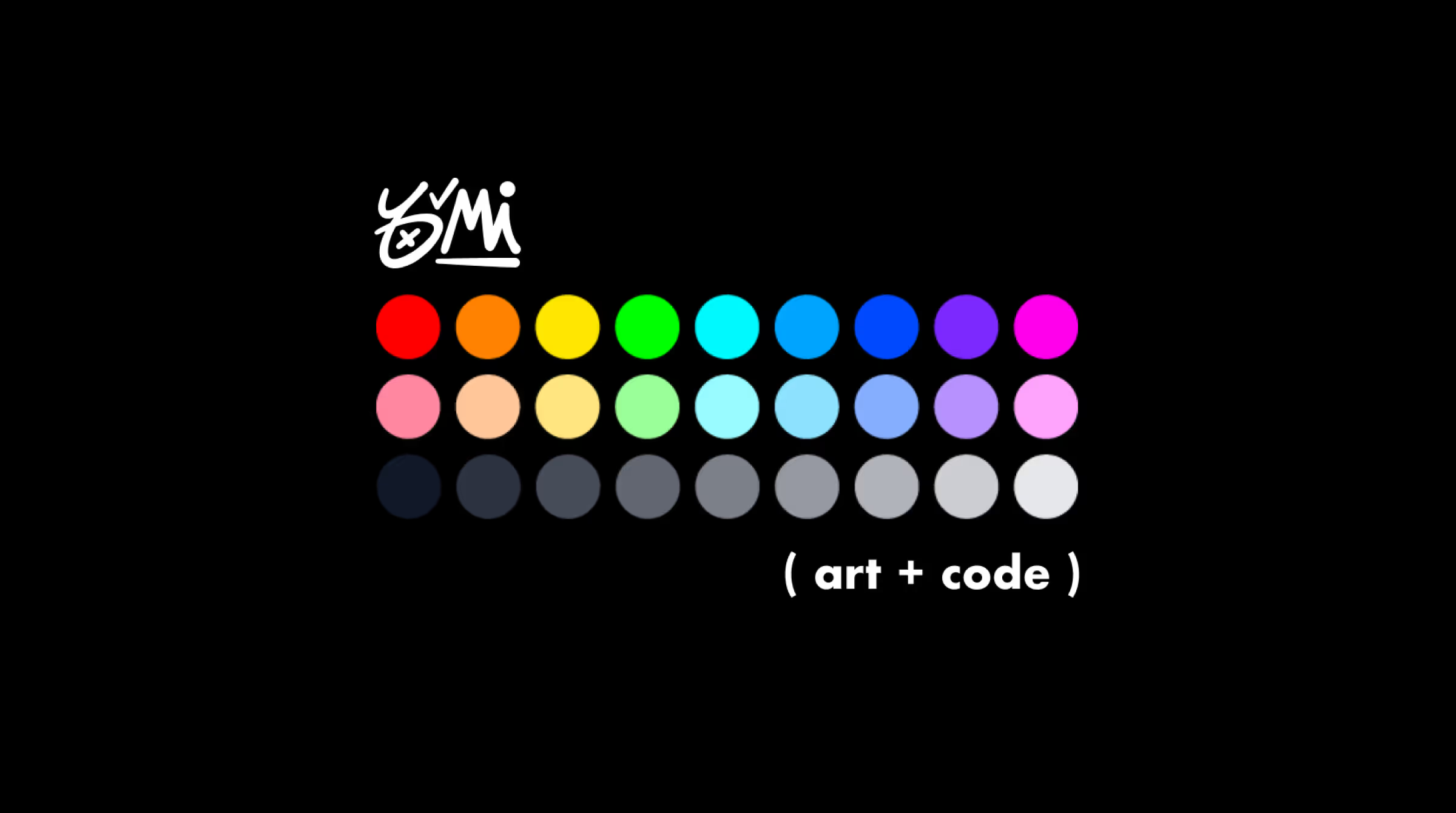



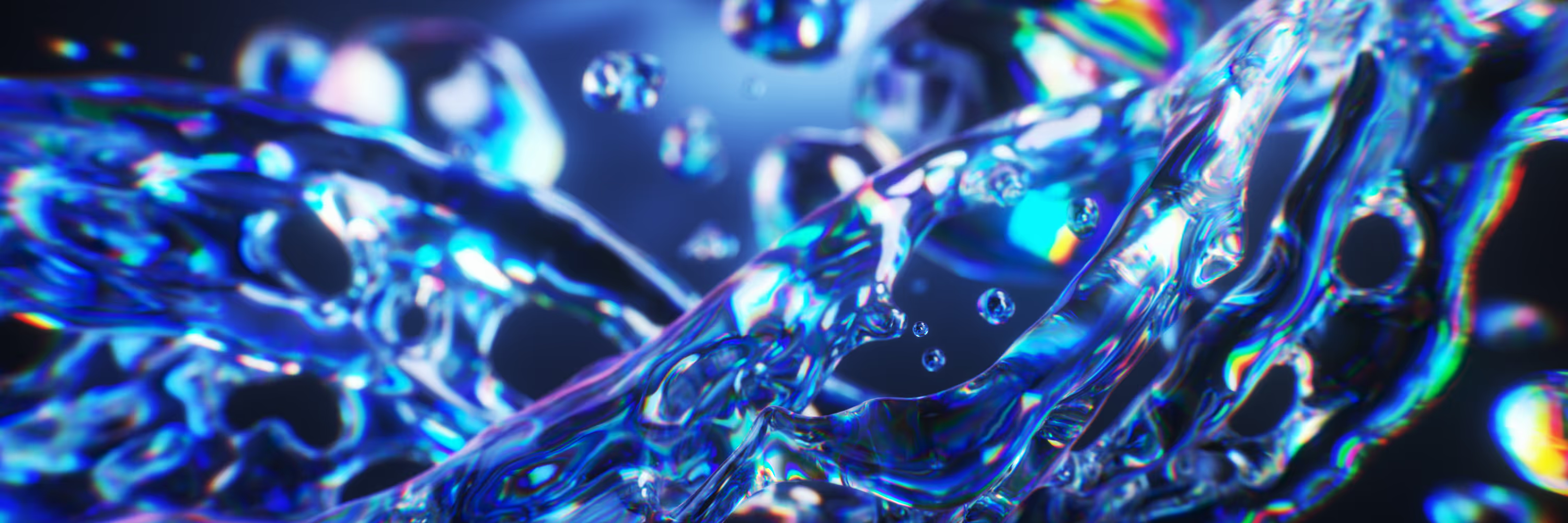
.avif)
.png)
.png)
.png)
.png)
.png)
.png)
